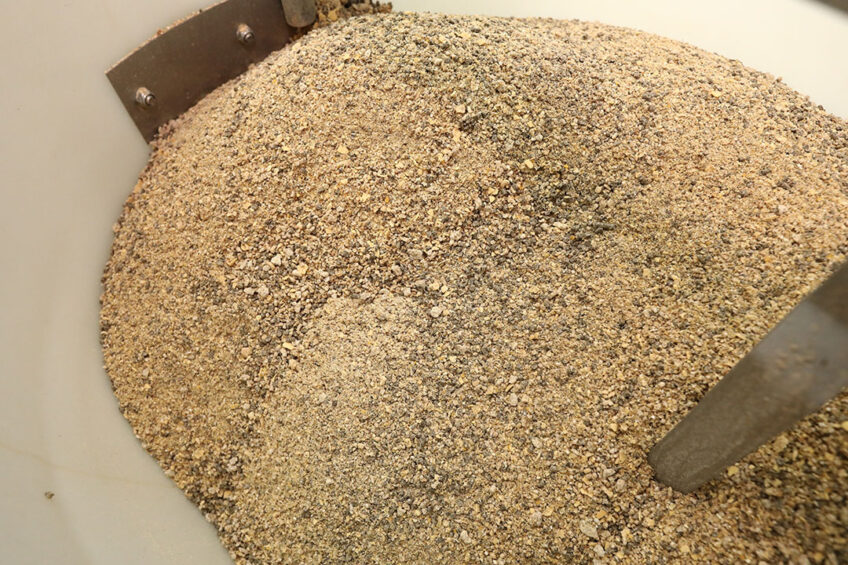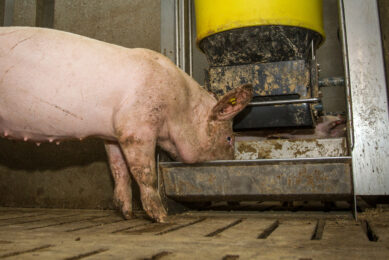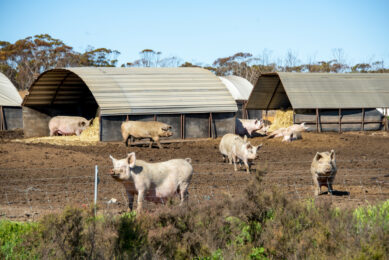What determines feed structure in swine diets?

The optimal particle size of feed to increase feed efficiency and to improve the gut health of pigs is increasingly getting swine nutritionists’ attention. Finding the right particle size is a matter of choices, explains pig nutrition expert Dr Francesc Molist.
The optimum feed particle size in swine diets is always a compromise between different objectives:
 Processing cost
Processing cost
Coarse grinding goes faster, but finer grinding can improve pellet capacity by compacting.
 Feed stability
Feed stability
High risk of de-mixing in smaller particles – such as minerals, vitamins and other additives – when the mean diameter increases. Coarse particles decrease the pellet quality, thereby increasing dust formation and matter disappearance during transfers. In meal form diets, handling is improved with a coarser particle size: better flowing properties.
 Nutritional efficiency
Nutritional efficiency
The general trend is a better apparent faecal digestibility of energy in growing and finishing pigs when the particle size decreases. In coarsely ground diets, especially if roller mills are used, undigested particles can be seen in pig’s faeces resulting in a higher variability of digestibility. These changes in digestibility will impact Feed Conversion Ratio (FCR) consistently, but the effect on growth is highly variable.
A 200-400 micron decrease in particle size combined with pelleting can improve the average daily gain (ADG) with 1.2-2.4% due to a better nutrient digestibility. The FCR can improve even more, especially in piglet feeds, when spillage is reduced due to pelleting. However, when stomach ulcers occur, the feed intake and ADG can be reduced.
 Undesired side effects
Undesired side effects
A higher risk for gastric ulcers, sometimes related to sudden pig death, has been reported with finely ground diets in pigs worldwide. It is very likely that finer particles leave the stomach faster than larger particles, so the pH drops faster and “free” hydrochloric acid erodes pre-existing injuries (due to weaning stress for example); these are suitable locations for bacterial infection.
At this stage, it is important to increase the proportion of coarse particles by the inclusion of for example one ingredient in coarse form. In order to not penalise the performance of the pigs, it is important to bring these coarse particles from inert fibre (very poor in energy) and grind the rest of the feed as fine as possible in order to promote the digestibility of the other nutrients. The presence of coarse particles in the stomach will increase the digesta retention time in the stomach and will create a pH difference between the proximal (high pH) and distal (low pH) parts of the stomach. Due to this pH gradient, the presence of erosion and lesions in the proximal part of the stomach will be reduced.
Priority to pellet quality
Taking everything into account, priority should be given to pellet quality (coarse particles reduce pellet durability) and trying to sustain factory needs (production capacity). Effects on gut health can be managed by changing the proportions of fine and coarse particles. To have an impact on stomach health the proportion of particles above 2.5 mm in pellet diets should be manipulated.











